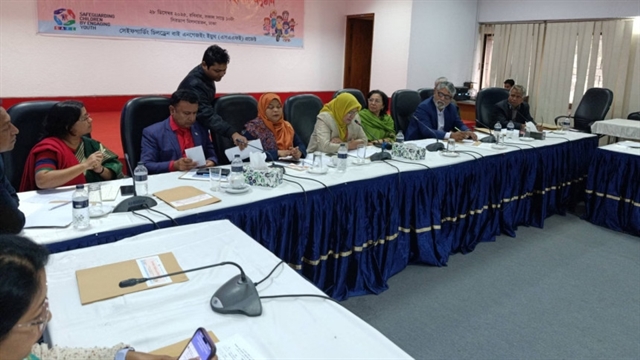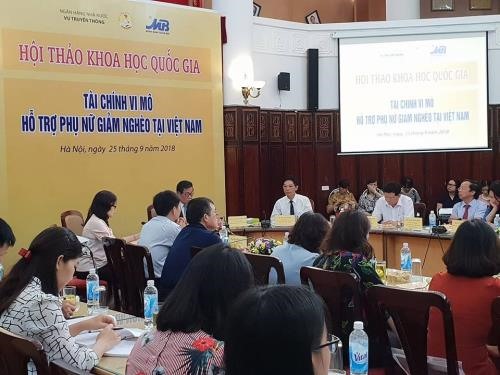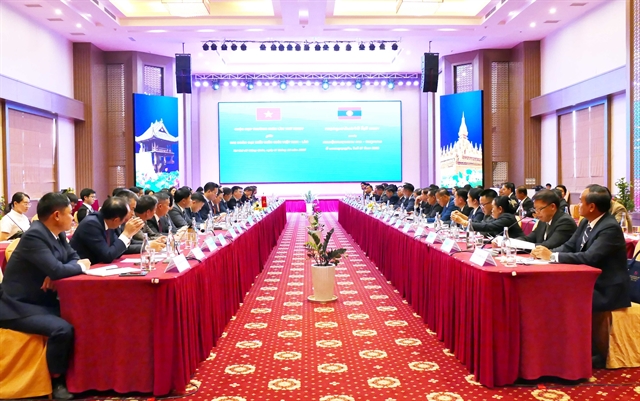 Economy
Economy

With simple borrowing conditions, no need for collateral and the chance to receive capital right at home, microfinance is seen as an effective tool to enhance women’s confidence, promote their participation in business activities, increase income and escape poverty.
 |
| Participants discuss the effects of microfinance on women’s confidence. — VNA/VNS Photo Lê Phương |
HÀ NỘI — "With simple borrowing conditions, no need for collateral and the chance to receive capital right at home, microfinance is seen as an effective tool to enhance women’s confidence, promote their participation in business activities, increase income and escape poverty.
"That, in turn, lifts their status in the family and society," said deputy governor of the State Bank of Việt Nam (SBV) Nguyễn Kim Anh at a conference held in Hà Nội on Tuesday.
Microfinance in Việt
According to statistics, in recent years, the poverty rate has fallen from 9.88 per cent in 2015 to 6.7 per cent in 2017, coupled with a sharp increase in income for households at all income levels.
However, the deputy governor pointed out some of the remaining shortcomings in microfinance in Việt
Phạm Xuân Hòe, deputy director of the Banking Strategy Institute under the SBV said that lenders should not only provide a source of capital for the poor but also need to provide directions, consultancy on production and business models.
"We should be giving poor people the needed fishing-rods, teaching them how to fish and then training them on how to sell the fish,” Hòe added.
Trần Thanh Long, director of the
According to Long, personal financial education will help improve the efficiency of loan utilisation, ensure the safety of loan capital, and help people detect and prevent wrongdoing by finance intermediaries.
In Việt
From the current situation, Long proposed that women need to be trained on microfinance before borrowing capital to use the loans effectively. On the other hand, it is necessary to develop a team of qualified trainers and appropriate curricula in microfinance as well as training materials tailored to each client.
“Moreover, a long-term personal financial education training strategy is essential as well,” Long said. — VNS




